Description
ISBN: 979-10-91406-89-5
Dryads and Fauns:
A Plunge in the Heart of the Forest
My fado cries, but it moves mountains.
Capicua
The work of Cássio Vasconcellos is a love poem for nature; it is a statement in which the clash with reality yields an impression of great romanticism and purity that is about to emerge, alongside a crazy truth, in which everything is revealed in the world’s future.
In an era of catastrophes, in which the feeling that the world is on the edge of a precipice is widespread, Vasconcellos cuts through the vertigo of times daring to create a work for eternity, a task that seems to belong to the domain of the stars. Photography has the power to take us—albeit in light of an impassable distance—to the indeterminate realm of fascination, where there are no logical measures of space and time.
Few artists have shaped the scope of contemporary art and influenced photography in Brazil like Cássio Vasconcellos. His works propose a new type of subjectivity associated with a disruptive imaginary about the role of photography, a medium necessary for the urgency of time. The artist lives permanently on the edge of the abyss and in vertigo, for both the angle he chooses and the experimental hybridism that endows his work with such relevant power. Being on the edge of risk is art’s point of excellence as it indicates danger and the breach that marks the intrusion of misfortune in perfect beauty.
In Dryads and Fauns (2019-2020), the photographer draws us to a place of dreams and fantasy, making us question the existence of a lost paradise, a planet in perfect harmony. The forest as part of nature represents, to some extent, the call for human beings to return to collective values and to distance themselves from the machine of consumer society, allowing for a moment of reflection upon the self and our place in the world. It also incorporates the greatness of nature and the cosmos, as a means of searching for answers to the questions about the fragility of men.
The journey goes through a dreamlike world full of allusions to the universe of painting, in which mythological creatures discreetly break the secrecy and allow glimpses into another world—through the appearance of dryads and fauns—like mirages, punctuating the work in a narrative of seduction and conveying the constancy and spirit of the project. In this universe, the emotional rules over the rational, and an infinite network of memories stimulates the senses. This poetic reflection seeks to transform the real, sometimes as a shadow, a fleeting escape from a world that has lost its weight and acquired the lightness of melancholy.
In the vastness of the Brazilian forest, the artist invites us to witness a sublime aesthetic dance through photography and painting and surprises us with muses and nymphs that inhabit Eden in a personified image of nature’s creative and conceiving grace. Here, the forest is defined as something impassable, a metaphor for a personal, global, and urgent transformation of the Earth, in which the artist explores ways to reconnect the past and the future, in order to rethink the present. These experiences with the forest represent the enigmatic and hidden sides of the unconscious.
The contemporary artist-explorer is also a poetic conqueror: by appropriating paintings from the 19th century, he restores their condition of autonomous images. He cuts, selects, and collects them to create a composition in which the images are given a new aesthetic dimension and a different cultural condition. The photographer is anti-illusionist as he suspends the narrative and presents a new place in the absence of memory, opening a gap in time and creating an interruption between various times. Digitally assembled, the characters taken from the works of painters such as William-Adolphe Bouguereau, Jacques-Louis David, Eugene de Blaas, and Hippolyte Flandrin appear here mimicked in the density and splendor of the landscape, conveying photography’s pictorial approach, which brings, with renewed vitality, a landscape as sentimental as it is tragic. Vasconcellos’ work calls the viewer’s attention, demanding a mindful, conscious, and inquiring gaze.
On the other hand, the beauty and magic evoked by the hybrid techniques and languages bring into existence what had never been experienced, affectionately combining photography and painting in a tableau vivant in which they come together to form a single unit: it is not only that the photograph resembles painting but also that the figures appropriated from painting look like photographs. When seeking eternity, anything (quelque chose) has to happen, a certain “style of desire,” as Borges has called it. Each pictorial work has a power that makes it look like a story, a complete chronicle with a beginning, middle, and end, shining its starlight. Together, these works form a constellation, a solid and coherent whole. In this collection of tableaux vivants, the artist questions, in an impressive way, notions of reality, photography, authorship, and truth, exploring camouflage in all layers. “The truth is your gift to deceive” and, given the delight it gives us, we can only pretend that we believe so we can delay the reality. Fortunately, through Vasconcellos’ eyes, we witness a dispassionate reinterpretation of this new pictorialism, creating new enriching aesthetic meanings of photography.
In a cycle of changes, this series of work fosters an understanding of how the artist deals with the power of the unknown from the most desired to the most feared future. With his own hands, the artist takes us to a gallery submerged with a collection of myths and fictions as he creates an image-based, imperfect, and poetic place; its vigorous nature amazes and fascinates us as it connects the subjectivity of the photographer with our own. We, who can see the images and feel their materiality, let ourselves be guided by the poetry that is at the heart of the auratic image, in which memory enables the experience of the sublime.
This crossing, which had already started in the series Viagem pitoresca pelo Brasil (2015), is based on the history of artistic and scientific expeditions (which brought together names such as Johann Moritz Rugendas, Jean-Baptiste Debret, and Hercule Florence, among others) that happened in Brazil during the 19th century, associating art and science on a mission to map the Brazilian territory and present it to the Old World. With this, Brazil was one of the few American countries to be registered in such a rich and riveting way, occasionally portrayed as a paradise, at times beautiful and fascinating, and at other times frightening and sublime. By the end of that century, photography was considered an indispensable scientific tool to objectively register the forms and expressions of this tropical nature. As an advocate of a new photographic lexicon, Vasconcellos challenges the understanding of photography as a document and makes each image the key to another one. Therefore, although paying homage to his great-great-grandfather, Botanist Ludwig Riedel, who participated in the Langsdorff expedition (1825), the photographer embarks on a daring archaeological adventure in search of answers about the present, excavating the layers of the imaginary that have been deposited throughout history.
It is the artist’s responsibility to promote changes in the language—to poison and question it in search of the mistake that poetically represents the mystery of time. Romantic and intense, this series expresses the magnitude of the work as an obsessive crossing of times and spaces. Guided by these freeing gestures, the artist invites us to look, with a sense of familiarity, at the same millenary tree evoked by the painter Debret around 200 years ago and unveil the mystery it hides by revealing the distance of things with intimacy, looking at them in the eye until the distance fades.
In this fable, figures of nature that are simultaneously human and abstract, real and fictional, recognizable and transcendental appear in praise of the instability of the world. In the forest’s exuberance, among rocks and waterfalls, the artist reminds us that dryads and fauns, born from the sap of trees, are like metaphors of the purest umbilical relationship to nature in such a way that, according to mythologies, if the tree dies, these figures also succumb.
It is through these metamorphoses that, in a stroke of genius, the photographer takes us to the center of the world to shake us with the silent scream of a wounded Earth. There is a feeling of restlessness in Vasconcellos’ heart as if he and the world could leave forever to the fairest heart of humanity. Perhaps this is the great moment of poetic and silent resistance that, by interrupting the vertiginous cycle of the times, will help us confront the vastness and chaos of the world.
Ângela Berlinde
____
Artist, curator, and Post-Doctoral Researcher in Visual Arts at the School of Fine Arts at the Federal University of Rio de Janeiro. Her research investigates hybrid forms of photography. She is Portuguese and lives between Portugal and Brazil.

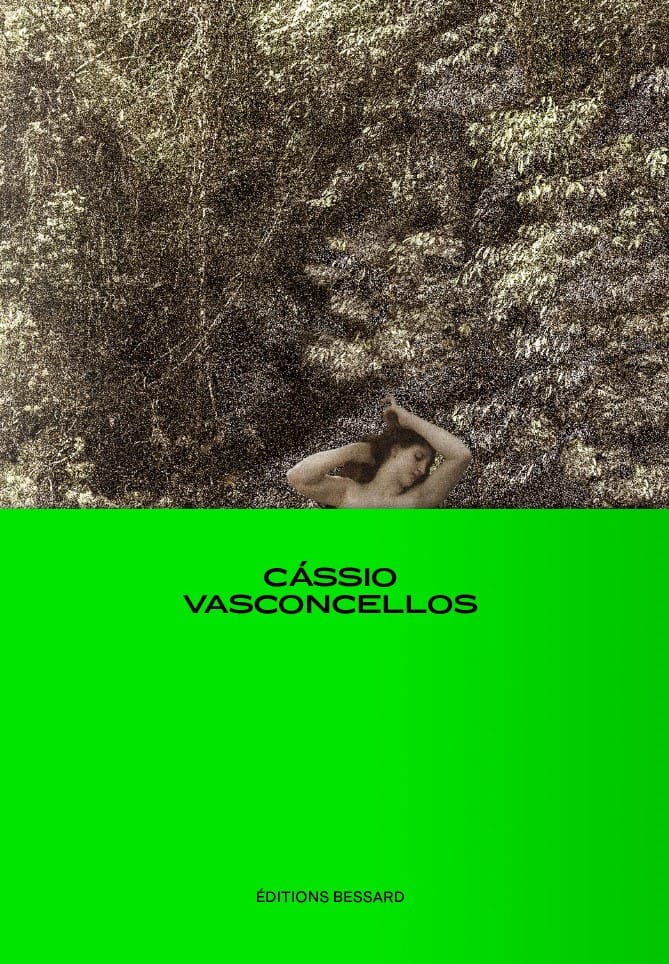
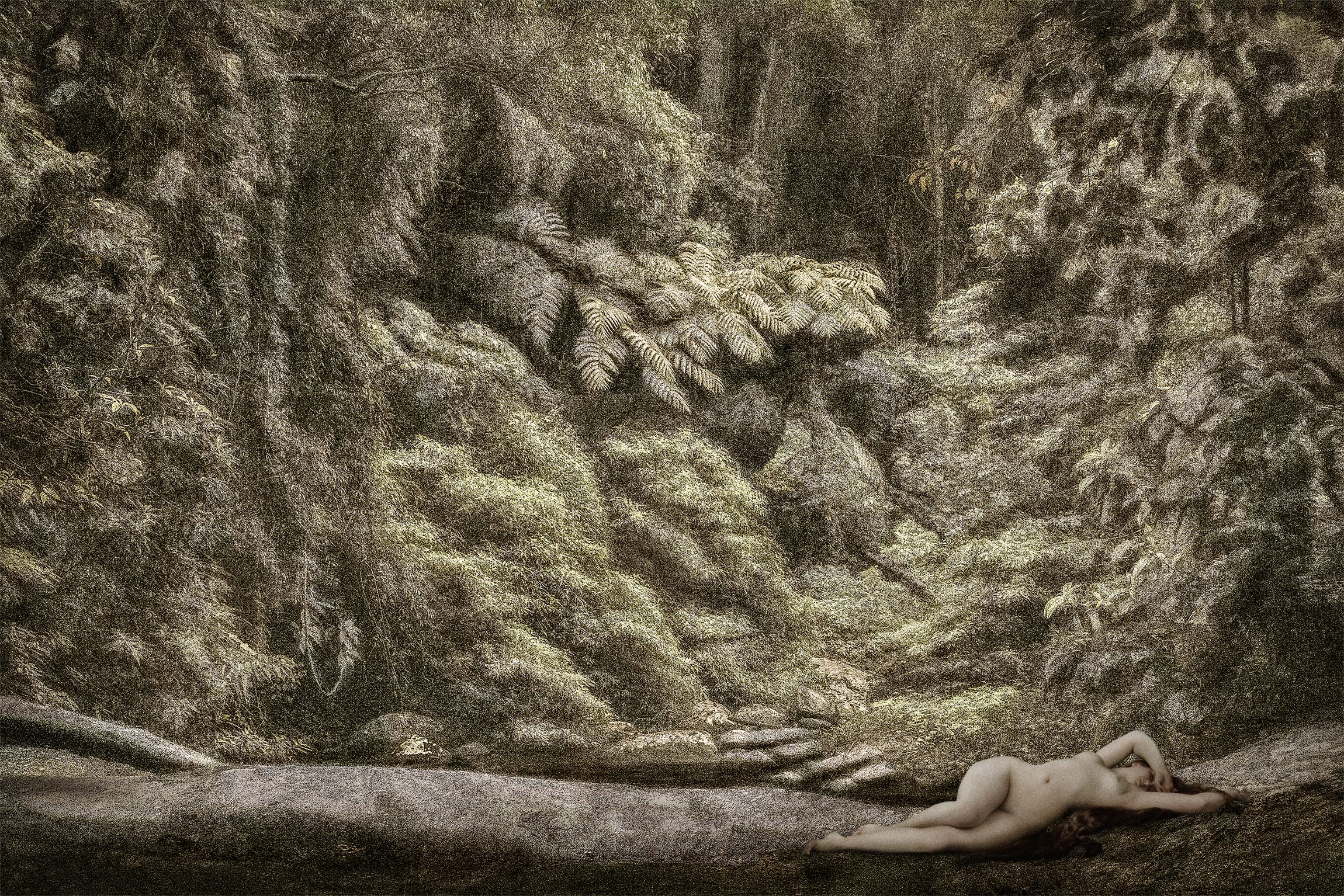

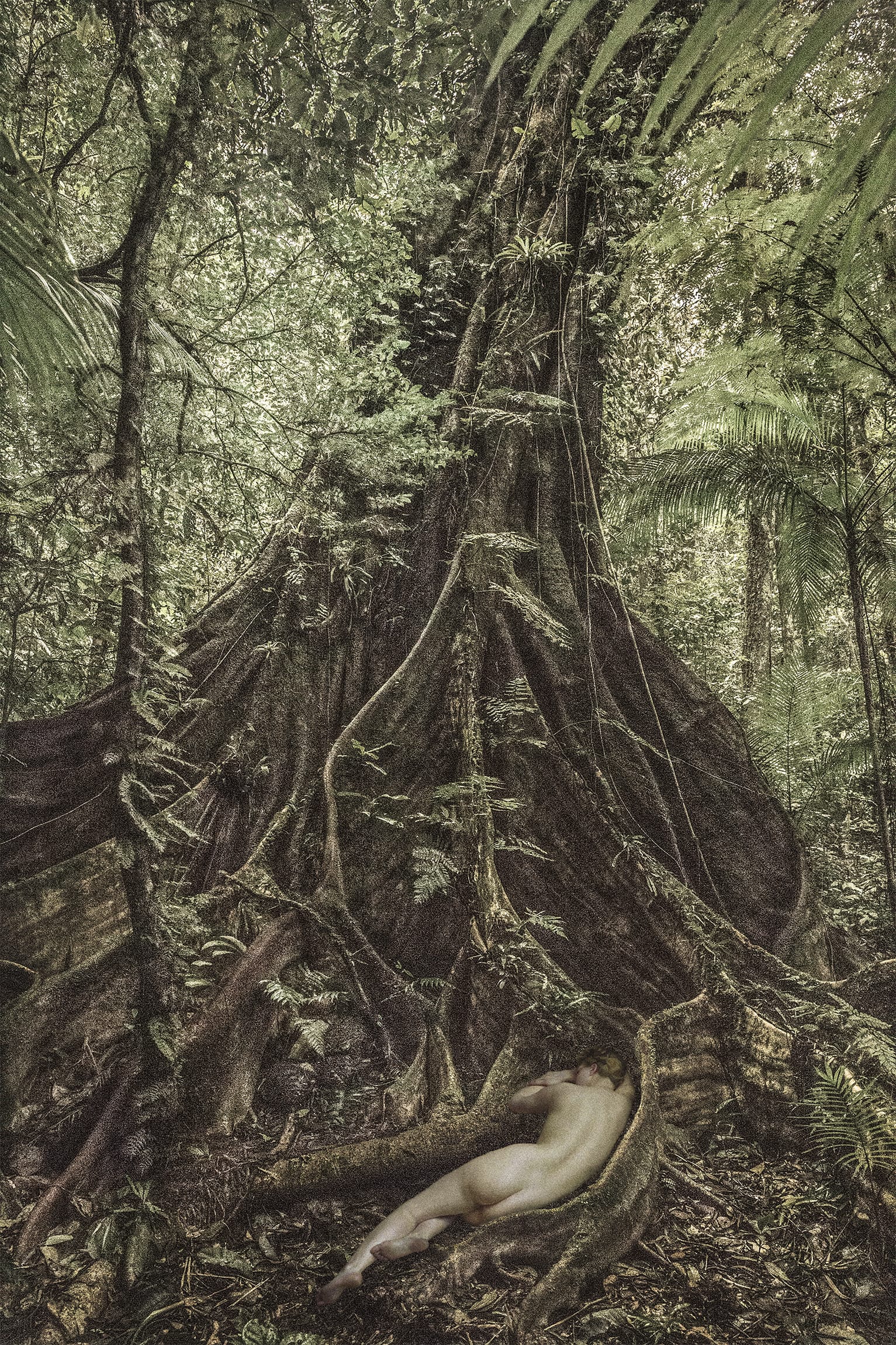
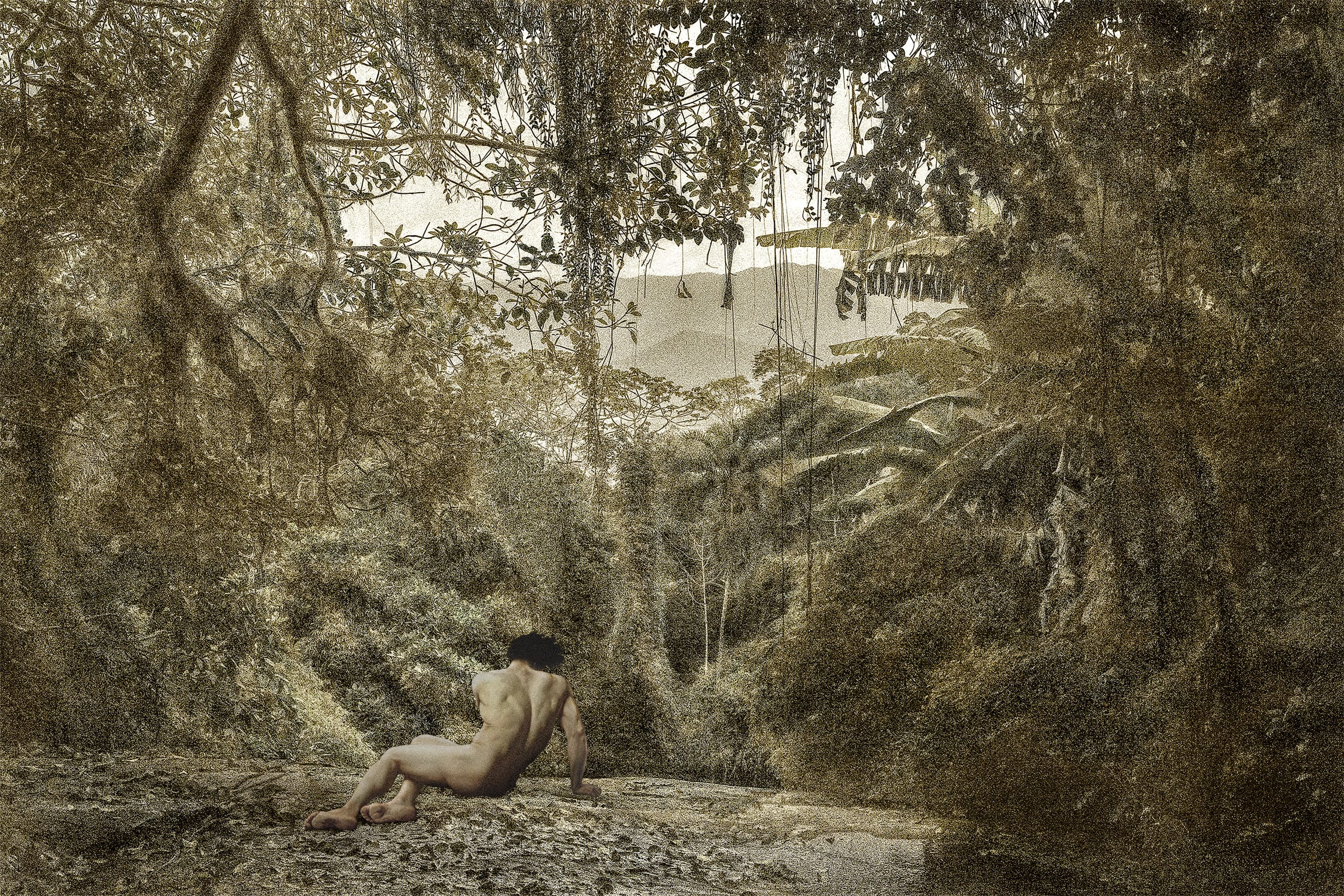
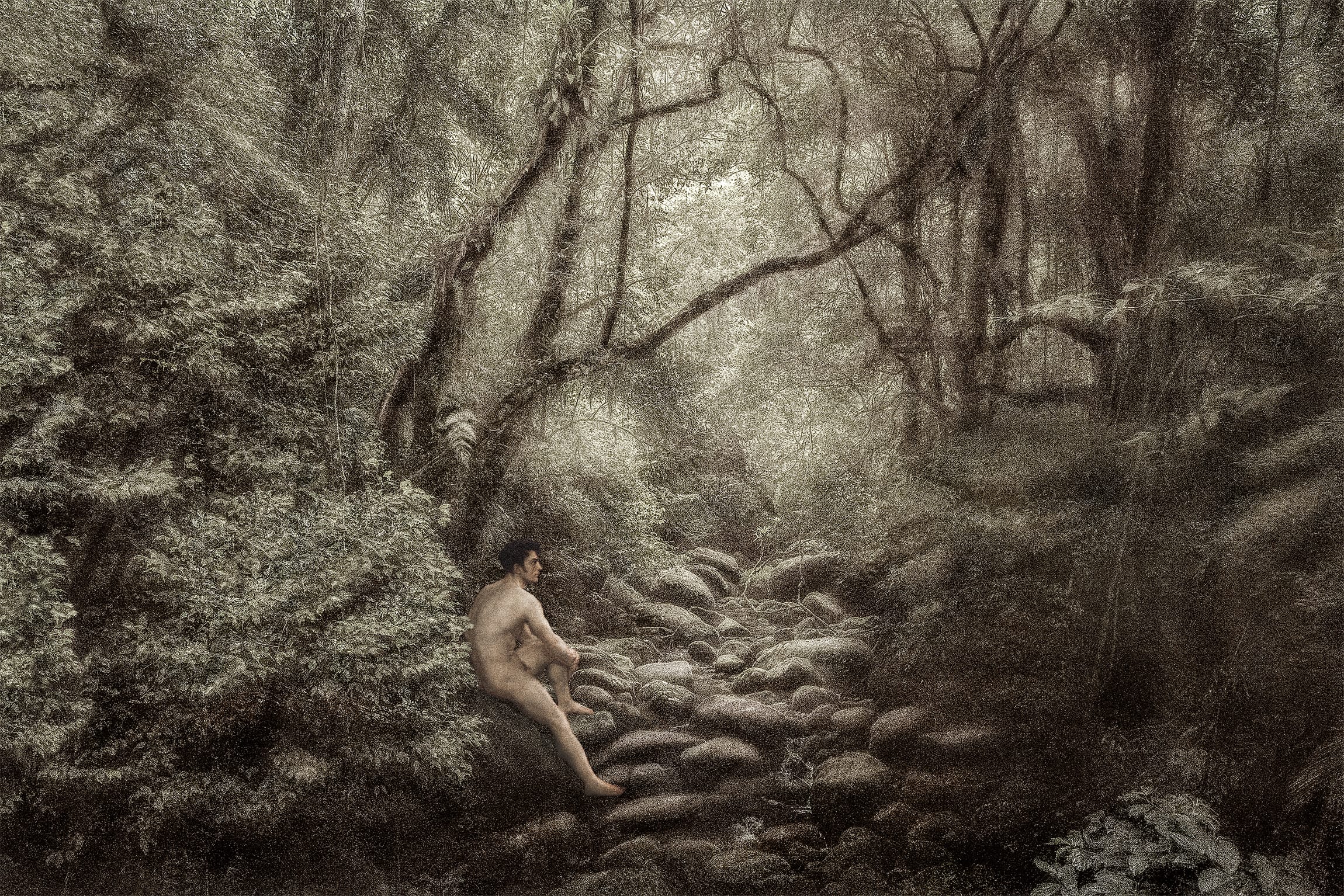

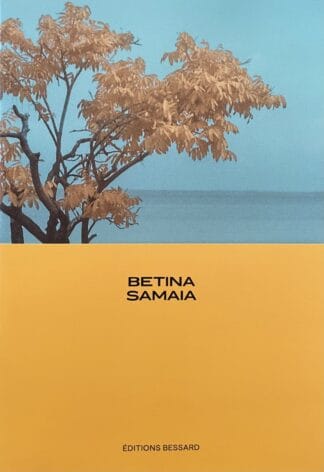
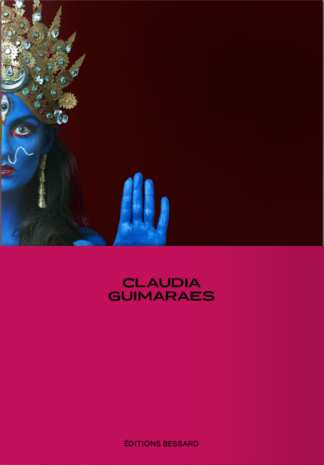


Reviews
There are no reviews yet.